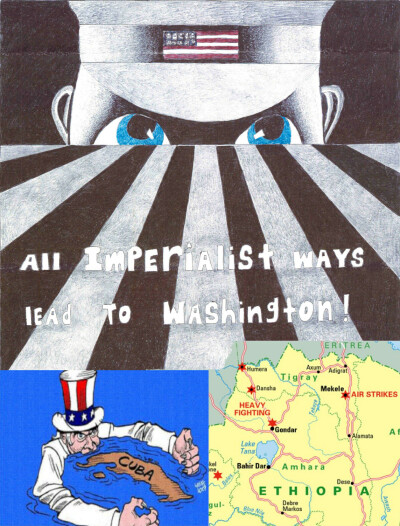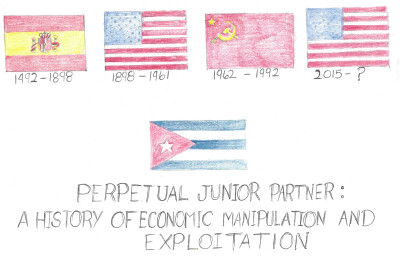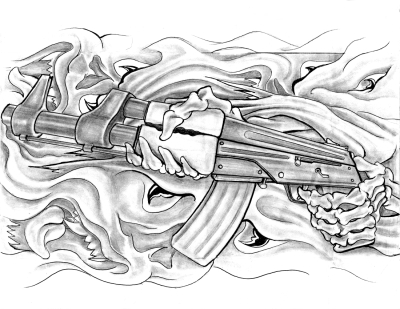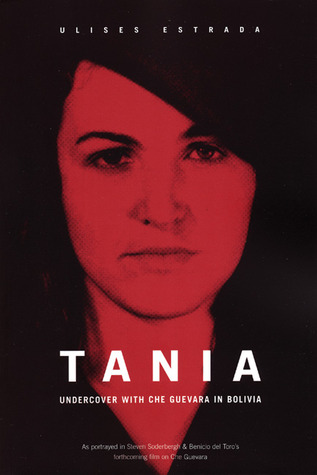
COVID-19 Reveals Contradictions in Cuba: Stop the U.$. Embargo

At this moment Cuba is entering into a new phase in their struggle which unveils a reality unfavorable to socialist construction. Yet we should keep in mind that Cuba’s fate remains unsealed. History shows that the Cuban people are up to the task of fighting for socialism as they continue to inspire others around the world. They have enormous amounts of creative and practical experience. Here we examine some of the positions in the popular debate around Cuba, as well as the true source of its successes and failures.
Privatization and Pandemic
The current protests in Cuba are the result of growing privatization of sectors in multiple industries. This has been a gradual trend, but in February of 2021 it took on new heights. Tourism in particular, as a private industry, is Cuba’s largest revenue generator making over $3.3 billion for its people in 2018. With the ease of relations under President Obama there was unfortunately even more of a rise in privatization and large growth in tourism. Labour Minister Marta Elena Feito said the list of authorized activities in the private sector had most recently expanded from 127 to more than 2,000. Some of these include barbershops, restaurants, taxi services, domicile and hotel rentals, small shops and cafes. Most of these private sector jobs, which are primarily in major cities such as Havana, are oriented towards the tourist industry.
The last report showed that 600,000 people, around 13% of the workforce, joined the private sector when the opportunity arose. COVID-19 brought problems as the borders were closed to non-residents in order to prevent the pandemic’s spread. About 16,000 private workers asked for their licenses to be suspended, according to the Labor Ministry, which temporarily exempted them from taxes. Shortly after, the amount increased to 119,000, which was roughly 19 percent of the private workforce. This measure allowed for a small section of the private work force to be protected during the pandemic, however other sections, mostly in tourism, were catastrophically hit.
U.S. Economic Warfare
The labor ministry stated that the decline began before COVID-19 as a result of Trump’s new additions to the embargo on Cuba. In December of 2020, Cuban tourism had fallen by 16.5% due to U.S. sanctions that imposed restrictions on travel to Cuba, money transfers, and trade between Cuba and other nations. The U.S. Office of Foreign Assets Control in 2020 stated the following in regards to the more recent additions, “OFAC is removing the authorization for banking institutions subject to U.S. jurisdiction to process certain funds transfers originating and terminating outside the United States, commonly known as”U-turn” transactions. Banking institutions subject to U.S. jurisdiction will be authorized to reject such transactions, but may no longer process them.” The rules also block money sent to Cuban government affiliates, and decreased the limit but still allow for remittances to most families in Cuba.
On 19 October 1960, the U.S. embargo was implemented as policy to undermine the revolutionary government as a response to its nationalization of industries and dealings with countries led by communist parties. Over the coming years tension only increased and the embargo would continually be adjusted to prevent growth of the Cuban economy. As of now the sanctions vary with over 231 entities and subentities like ministries, holding companies, hotels, etc.; meaning the U.S. is trying to control Cuba’s economy. These provisions also extend to international companies like the various shipping companies in 2019 which were sanctioned by the U.S. government for participating in oil trade between Venezuela and Cuba. This was during the same period that the U.S. was accusing Venezuelan President Nicolas Maduro of falsifying the election results that left Juan Guaido to bite the dust. Allegations which later were proven to be false yet nevertheless caused dire consequences for millions.
Economic terrorism continues to be perpetrated by the U.S. against Cuba to prohibit other nations and companies from participating in trade deals. Some ways the U.S. does this is by denying licenses or deals with U.S.-based companies or other nations that have the audacity to ignore the U.S. embargo on Cuba. Year after year the U.N. votes in favor of an end to the embargo with only two nations (the U.S. and Israel) voting in favor of continuing the embargo.
In 2021 former U.S. Secretary of State Mike Pompeo designated Cuba once again as a state sponsor of international terrorism in another futile attempt to further isolate Cuba from potential trading partners. This designation carries with it the implication that any business or state which does business with Cuba participates in sponsoring terrorism. As a result the U.S. will then implement sanctions on those businesses or states or at the very least deny them vital business opportunities that they need to sustain a functional economy in a U.S.-dominated global market. It follows from this that the private sectors in Cuba who were not prepared for the pandemic, were already affected by the ongoing trade embargo for about 60 years, with Trump’s administration amping up attempts to suffocate Cuba’s resilient economy.
Cuban Protests Dwarfed by Uprisings in U.S.
When the protests erupted in Cuba this month, the U.S. wasted no time in opportunistically pushing their agenda. Meanwhile, expatriated Cuban terrorists living in the U.S. sent videos over social media promoting the destruction of public property owned by the Cuban people, looting, assault on peoples security forces etc. These videos, not surprisingly, never found their way into mainstream reports but were exposed by Cuban media. Díaz-Canel even made a point to say that there are revolutionaries who have been misguided by false reports forged by subversive reactionaries, and people with legitimate demands for an end to the embargo and reform of failed policies. This made clear that these demonstrators were not the target of criticism but genuinely concerned, although in some cases misguided, citizens.
In reality only a small capitalist minority from certain private sectors affected by the embargo and COVID-19 have taken to the streets to promote their interests; interests that are antagonistic to that of the Cuban people. President Díaz-Canel proceeded to visit the demonstrations himself and speak with people. On live TV Díaz-Canel called revolutionaries to take to the street and oppose the reactionaries and to stay in the streets as long as necessary in order to defend the revolution. It was correctly stated by Díaz-Canel that the reactionaries with violent intent are of a specific small group who align with U.S. interests. More specifically from his mouth he stated that, “They want to change a system, or a regime they call it, to impose what type of government and what type of regime in Cuba? The privatization of public services. The kind that gives more possibility to the rich minority and not the majority.”
Counter protests proceeded to take place where a greater part of Cuba’s 11 million people came out to demonstrate their support for the revolution and continuance of socialist construction. With such a small minority of protestors being for regime change and only a few dozen arrests we have to ask ourselves why there is such a controversy? It is only explainable by the private interests and imperialist U.S. who wishes to finally deal a deadly blow to Cuba. After decades of failed CIA assassinations, a failed U.S. invasion, and a failed Embargo, the U.S. government is reiterating its fledgling commitment to undermine the people of Cuba.
All the while the Amerikans fail to see the irony that in 2020 the protests in the U.S. were estimated to have between 15 and 26 million participants with over 14,000 arrests documented as related to the protests and a number of deaths associated. These numbers are not even all encompassing in the true magnitude of arrest and torture by the U.S. government on its own citizens. These protests put forward demands guaranteed by the Cuban constitution. Article’s 16, 18, 19, 41, 42, 43, 44 of the Cuban constitution reveal rights and guarantees afforded to Cubans that in the U.S. don’t even exist or are up for debate. A civil war was needed to end slavery only to have it replaced by Jim Crow segregation in this country. Without a doubt a quick look at the Cuban constitution in comparison with the U.S. constitution, one would begin to question the true ethics of the U.S. and why Cuba is portrayed the way it is.
Cuba has made greater advancements than the U.S. in many fields. It achieved a higher literacy rate, lower infant mortality rate, a lung cancer vaccine as well as a COVID-19 vaccine independently developed with a 92% success rate. All this despite the embargo and war crimes of the U.S. The U.S. in their sad attempt to condemn Cuba’s Communist Party declares the people of Cuba to be subjugated, unable to protest, or have free speech. As can clearly be seen, the president of Cuba not only respects the constitutional right to protest and have free speech, but invited millions to take to the streets to do so.
The Will of the People in Cuba
In 2018 a new draft of the Cuban constitution removed reference to communism. This first draft was met with wide-scale protests and a popular demand that reinstated communism as the goal. In 2019 the new Cuban constitution reaffirmed the popular will. Time after time the U.S. is embarrassed by Cuba’s revolutionary people. Which is presumably why the U.S., who routinely overthrows democracies, assassinates world leaders, or suffocates nations with sanctions, takes special interest in torturing Cuba. It is not without effect either, as many Cubans feel this pressure and suffer untold losses in this cruel escapade waged by the United States.
Mind you, Cuba is not without mistake. The continued privatization of industries and reliance on tourism is a massive failure on the part of the Cuban government. Failures to foster the full creative potential of the Cuban masses by putting politics in command has led the Cuban government to become a bureaucratic mess. With a large population of revolutionary masses eager to promote the ideals of socialism and forge ahead on their path of self-determination, it is sad to see the Cuban state fail to remove the fetters on the Cuban people that restrict their ability to take control of power for themselves. This is a result of internal contradictions within the Cuban state.
Over the past few decades the gradual decline of peoples’ power has been witnessed. Today’s events are a result of the pandemic and U.S. embargo. However, the principal issue is not from without Cuba and it certainly is not from the Cuban people. It is in the Cuban state and their failure to remain vigilant against growing opposition forces within the state itself. Forces that undermine the peoples’ will. Forces that cause unnecessary retreats and failures in planning. With all due respect, these are serious errors that must be rectified by campaigns led by the revolutionary Cuban people. Only the Cuban people can determine their destiny.
So our appeal to Cuba should be directed towards the revolutionary masses who represent the socialist majority. We are in solidarity with you and support you. We will continue to fight to bring to an end the U.S. embargo and all interventions. The revolutionaries in Cuba who emulate the ideals as well as principles of socialism with the aim of building communism are a continued inspiration to the freedom fighters all around the world.
Díaz-Canel welcomed revolutionaries to the street to participate in open debate and oppose the reactionaries. This is a step in the correct direction. So long as those revolutionaries are allowed to progress down whatever path they find suitable for themselves to sustain their revolution. So long as they combat the reactionaries as well as the revisionists. All of this on the terms set forth by the revolutionary Cuban masses themselves who are truly world renowned heroes of revolution.
MIM(Prisons) adds:

Cuba stood out for many decades as a symbol of resistance to U.$. imperialism, even after the fall of the Soviet Union. It is also well-known for directing resources in the interests of the Cuban people and the people of the world. In our article on Ethiopia we mention that the Cubans had their differences with the imperialist Soviet Union, and that speaks to the path Cuba took independent of the USSR during and after its existence.
We agree with current President Díaz-Canel that privatization is only bad for the people. However, nationalization only threatens imperialist meddling, it does not address the internal class contradictions of a country. And in the case of Cuba, with the dependence on tourist money and remittances, the Amerikans have significant and increasing control over their economy despite nationalization.
In the United $tates state-run firms (like the post office) are often defined as “socialism.” But Maoists define socialism differently, as an economy that is guided by the proletarian line, always engaging in class struggle, pitting the interests of collectivism, humyn needs and humyn relations above production, efficiency and profit.
As Mowgli writes, the internal contradictions of a capitalist economy in Cuba cannot ultimately be resolved without a popular movement to rectify the current leadership and shift to the socialist road. We would go further in stressing that socialism is class struggle. There is no policy shift that can bring a country to the socialist road, only the militant mobilization of the masses concentrated in a communist party that puts the class struggle at the forefront. Our opposition from within the empire to the embargo serves to help the Cuban people see their dreams come true via continued class struggle.









